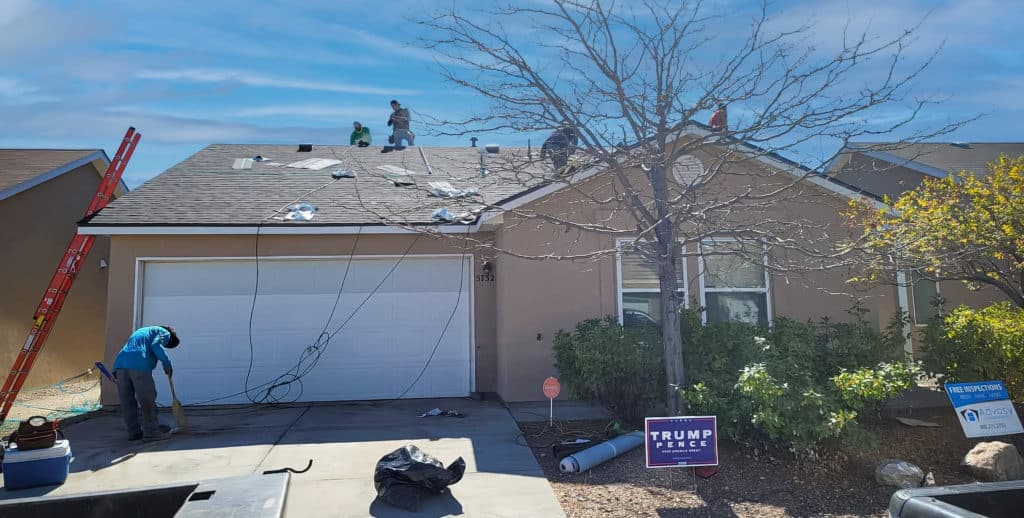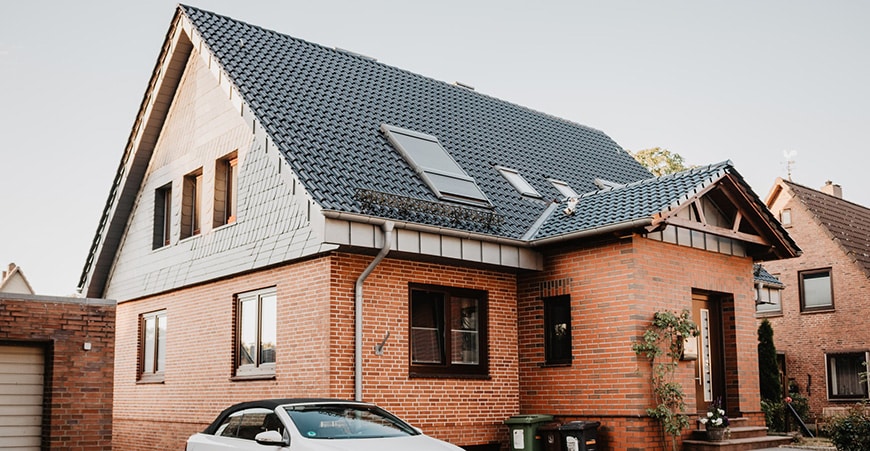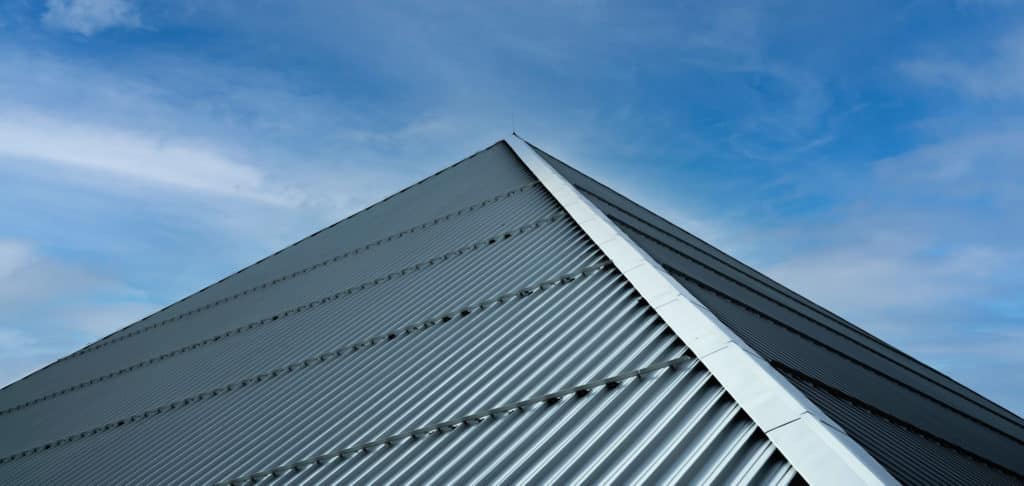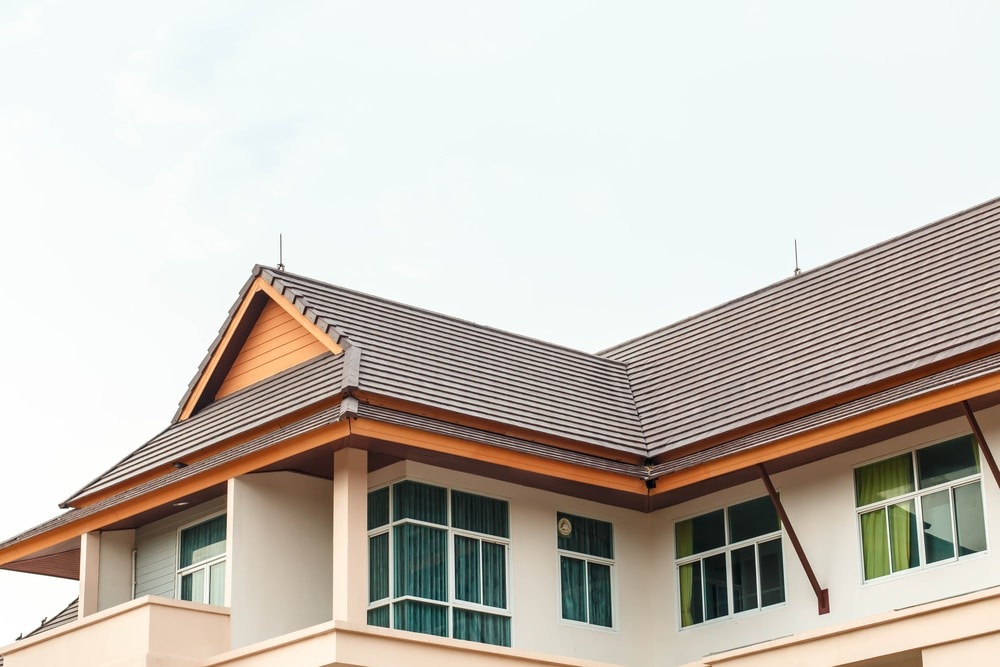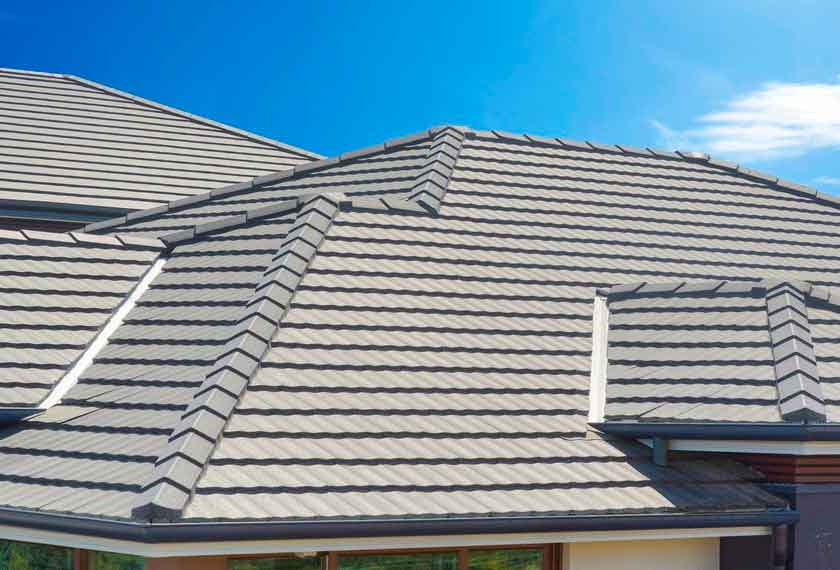Maintaining a roof is essential for having a safe and comfortable home. A well-maintained roof will not only protect the structure of the building, but also provide an aesthetically pleasing exterior that increases its market value. Knowing how to properly maintain and extend the life of your roof can save you time and money in costly repairs down the road. This article provides practical advice on how to do so while ensuring maximum longevity.
The first step in maintaining a roof is understanding what type of material it is composed of. The two most common materials used are asphalt shingles or metal, with each requiring different maintenance approaches. It is important to be aware of which material was used when estimating repair costs and planning future upkeep procedures.
Finally, proper maintenance goes beyond simply replacing worn shingles from time to time. Regular inspections should be conducted to identify potential damage caused by weather conditions or other environmental factors such as tree branches rubbing against the surface of the roof. With this information in hand, homeowners can take preventative measures before any serious damage occurs. In conclusion, following these steps can help ensure that your roof remains strong and secure for many years ahead.
Assessing Your Roof’s Condition
Before attempting to maintain or extend the life of a roof, it is important to assess its condition. This involves roof inspection of both the interior and exterior components of the rooftop. It is recommended that this assessment be done annually in order to detect any signs of wear or damage before they become more severe. When assessing a roof’s condition, look for cracks, missing or damaged shingles, leaks around vents and chimneys, as well as moss growth along seams or other areas that are difficult to inspect from ground level.
If any issues are noticed during the assessment process, it is best to address them immediately with professional help. A qualified contractor can provide repairs and/or replacements depending on what needs to be done. If no major problems are found upon initial inspection, there are still some maintenance steps that can be taken to ensure longevity of your roof’s lifespan.
Regularly cleaning debris such as leaves and branches off the roof will help prevent water build-up which could lead to mold growth and further deterioration over time. Additionally, trimming back trees near the house may limit potential damage caused by falling limbs due to storms or high winds. Lastly, scheduling yearly inspections with a qualified contractor can help identify small issues early on so they do not turn into bigger ones down the line. Taking these proactive measures now can go a long way towards preserving your home’s roof for years to come.
Cleaning And Inspecting Your Roof
Cleaning and inspecting your roof is an important part of maintaining its condition. This process should be done at least twice a year to ensure that the roof is free from debris, moss or algae growths, and other signs of damage such as cracked tiles or loose boards. During this inspection, any necessary repairs should also be addressed.
When cleaning your roof it’s important to use only non-abrasive materials such as soft cloths and brushes. Harsh chemicals can cause permanent damage which will reduce the lifespan of the roofing material. It’s also important to avoid using high pressure water jets when washing your roof as these can erode protective coatings over time. Following manufacturer instructions on how to clean their specific product is highly recommended in order to maintain both aesthetic appeal and durability.
After cleaning and repair work has been completed, regular inspections are still necessary in order to catch early signs of deterioration before they become serious problems. Additionally, identifying areas where water could pool during rainy periods may help prevent future leaks by allowing you to take preventive measures such as applying sealant around vulnerable points or adding additional drainage features for better runoff control. By taking these simple steps regularly, you’ll be able to get more out of your investment while protecting your home and family from potential danger caused by a weakened or damaged roof structure.
Addressing Roof Damage
The importance of addressing roof damage should not be underestimated. The longer an issue is left unaddressed, the more likely it is to lead to a domino effect that can cause further issues in other areas and increase repair costs. It’s essential to inspect your roof regularly for any signs of trouble and act quickly if you notice something amiss.
When inspecting your roof for damages, here are five things you should look out for:
– Missing or cracked shingles
– Sagging sections
– Damaged flashing around vents and chimneys
– Stains from algae or mold growth
– Broken gutters or downspouts
If these problems are present on your rooftop, it’s important to contact a professional as soon as possible. A qualified contractor will know how to properly assess the situation, advise on the best course of action, and carry out necessary repairs. This could involve replacing missing shingles or repairing damaged flashing components. Additionally, they can help identify potential underlying causes such as improper ventilation which may have contributed to the problem in the first place.
Although there is always an upfront cost associated with roof repair services, making sure any issues are dealt with promptly helps prevent them from escalating into bigger problems down the line – saving you time, money and stress in the long run.
Replacing Missing Or Damaged Shingles
Replacing missing or damaged shingles is a critical component when it comes to maintaining and extending the life of your roof. This process involves removing old, broken shingles and replacing them with new ones. It can be done as part of regular maintenance or after severe weather has caused damage to the roof’s structure.
The first step in this process is to identify any areas where shingle replacement might be necessary. A homeowner should inspect their roof regularly for signs such as missing pieces or cracked/torn sections. If these are found, they need to be removed carefully using either a pry bar or hammer and chisel. The remaining nails should also be taken out before installing the new piece.
Next, the proper size and type of shingle needs to be selected for installation on the roof. There are various types available, from asphalt-based materials to more expensive cedar shakes. Once chosen, the replacement shingle must then be cut down to fit into place over existing flashing and underlayment material along with other components like ridge caps and starter strips if needed. Finally, all edges need to be sealed with tar paper or adhesive caulking before being nailed securely into position so that water does not penetrate through gaps in between different products used during installation. Replacing missing or damaged shingles may seem complicated but following these steps will help ensure that your roof remains strong for years to come!
Patching Leaks And Holes
Maintaining and extending the life of a roof involves more than just replacing missing or damaged shingles. Patching leaks and holes is an equally important step in ensuring that your roof will last for many years to come. Leaky roofs can quickly lead to costly damage, making it essential to identify and patch any issues as soon as possible.
Identifying areas where water may be leaking through is not always easy, but there are several steps you can take to locate problem spots on your roof. Visual inspections should be conducted regularly, at least twice a year, during which time you should look for signs of wetness around chimneys, skylights, vents, flashing, and other potential weak points. Another useful technique is to use a hose from below: point the nozzle up towards suspected leaky areas and watch for indications of dripping or pooling inside the home.
Once leaks have been located, patching them requires attention to detail and some hard work. If the area needs repair due to minor wear-and-tear such as cracked caulk or broken tiles, this can often be done using sealants available at any hardware store; however if larger sections need repairing, professional assistance may be required. In either case it’s best to make sure all repairs are completed with high quality materials that are suitable for outdoor weather conditions so they will last longer against precipitation and UV rays. Properly maintaining your roof by patching leaks and holes in a timely manner helps keep the structure intact while preventing expensive damages down the road.
Strengthening Roof Structures
Strengthening roof structures is an important factor in maintaining and extending the life of your roof. The strength of a roof structure can be determined by several factors, including its load-bearing capacity, joints, fastenings and overall stability. When these elements are compromised or weakened due to age, weathering or poor construction practices it can negatively affect the lifespan of your roof.
In order to strengthen the structure of your roof it is necessary to ensure that all components are up to code. This includes checking for any decay or deterioration in the wooden rafters and joists as well ensuring that all nails have been properly secured into place with high quality sealants and adhesives. Additionally, if there are any areas where two pieces meet together then they should be reinforced with additional framing members such as braces or ties.
Properly strengthening a roof’s structure will not only help maintain its longevity but also protect against future damage from wind, hail and other extreme weather conditions. Furthermore, regularly inspecting your roof for signs of weakness on a yearly basis will reduce costs associated with unexpected repairs or replacement down the road. Therefore taking proactive steps now towards strongening your roof structure can pay off greatly in both time and money saved later on.
Ventilation And Insulation
The seventh step in properly maintaining and extending the life of your roof is ventilation and insulation. Ventilation can help reduce moisture buildup, which could lead to mold or rot. Proper insulation helps regulate temperature and reduces energy costs. It also prevents condensation from forming on the underside of your roof, which can cause damage over time.
When choosing proper ventilation for your roof, it’s important to consider both intake vents (at the bottom) and exhaust vents (at the top). Intake vents allow air to enter while exhaust vents remove air from underneath the roof decking. This creates an airflow that cools down the attic space during warm weather conditions and circulates heat during cold temperatures. Additionally, be sure to check any existing soffit or gable end vent openings for blockages such as debris or bird nests that may impede adequate airflow through these areas.
Insulation plays a key role in creating an efficient thermal barrier between the inside of your home and outside environment. To ensure optimal comfort levels throughout all seasons, choose insulation with higher R-values – this indicates how well it resists heat flow. The amount of insulation you need depends on several factors including climate zone, location within building envelope, type of heating/cooling system used etc., but generally speaking more insulation is better than less when it comes to keeping your property comfortable year-round while reducing energy bills at the same time.
It’s wise to make sure both your rooftop ventilation and insulation systems are functioning correctly; doing so will provide long-term protection against costly structural damages caused by extreme weather conditions or excessive moisture build up due to poor circulation of air around your house.
Professional Roof Maintenance And Repair
Professional roof maintenance and repair are essential components of successfully extending the lifespan of any structure’s roof. Adequate maintenance can catch small problems before they become expensive repairs, while regular inspections ensure that all new or existing damage is identified in a timely manner. Furthermore, there are certain common practices that should be carried out to maintain roofs properly over time.
Firstly, it is important to address any issues with drainage quickly. If water accumulates around pipes, vents, skylights or other fixtures on the roof, this can cause major structural damage if not attended to immediately. Additionally, debris such as leaves and twigs should be removed from gutters and valleys regularly as these materials can block drains leading to water pooling up on the roof surface.
Finally, when hiring professionals for roof maintenance or repair tasks it is best practice to select qualified tradespeople who have experience working with your specific type of roof material. It is also beneficial to check references before moving forward with any project and find out what warranties may come along with the job being done. Doing so helps ensure that the work being completed meets quality standards and provides long-term protection against potential future damages.
Frequently Asked Questions.
How Often Should I Inspect My Roof?
A roof is a very important part of any home, so it should be inspected regularly to ensure that it stays in good condition. Inspecting the roof at least once a year can help identify potential problems before they become too serious and costly to repair. It is also important to inspect the roof after extreme weather events such as hail storms or heavy rains, which could cause damage that may not be immediately apparent.
Inspecting the roof yourself can give you an idea of its overall condition, but for more detailed assessment, it would be best to hire a professional contractor who has experience with roofs and knows what to look out for. The contractor will be able to determine if there are any weak spots on the roof or signs of leakage due to age or wear-and-tear. They may also check for things like moss growth, missing shingles, blocked gutters or other signs of disrepair that need immediate attention.
Are There Any Signs I Should Look For That Indicate My Roof Needs To Be Replaced?
It is important to recognize the signs that your roof needs replacing, as this will ensure you are able to maintain and extend its life. Knowing when it’s time for a new roof can save homeowners from potential costly repairs down the line.
One of the most common indicators that replacement is necessary is when shingles begin curling or buckling at their edges. This can be caused by weather damage such as high winds, but more often than not indicates that the roof has reached the end of its lifespan. Additionally, other signs include missing shingles, dark streaks on interior walls, and signs of leaking inside your home. If these conditions have been observed, then it would be wise to call in an expert inspector to assess whether replacement is necessary.
Ultimately, recognizing when your roof needs replacing allows you to make informed decisions about maintenance and upkeep—keeping your home safe from water damage while extending its lifetime.
What Are The Benefits Of Proper Roof Maintenance?
Maintaining a roof is an important responsibility of homeownership and can serve many benefits. Taking the time to properly care for a roof ensures that it will last longer, be more reliable, and increase its value as part of the home. Proper maintenance also decreases the likelihood of expensive repairs in the future due to damage from extreme weather or other factors.
The primary form of proper roof maintenance involves regularly inspecting the condition of shingles, gutters, flashing, vents, chimneys and other areas on the roof. Homeowners should look for signs such as missing shingles, water stains or mold growth inside attic spaces which could indicate moisture intrusion. Additionally, checking for loose nails around vent pipes or chimney flashings as well as any discoloration can help identify potential problems before they become major issues.
What Type Of Material Should I Use For Patching Leaks And Holes?
Maintaining and extending the life of your roof requires proper patching of leaks and holes. The type of material used for this task is just as important as the process itself. Patching with improper materials can have a significant, negative impact on the roof’s longevity.
When selecting material to use for patching, understanding which options are best suited to the task is key. Generally speaking, flexible sealants and patches made from rubber or plastic are ideal solutions when dealing with small areas affected by leakage or damage. These materials offer protection against water infiltration while allowing some flexibility to accommodate changes in temperature or movement caused by weather conditions and aging structures.
What Are The Best Practices For Strengthening The Structure Of My Roof?
When it comes to extending the life of a roof, strengthening its structure is an important step. Luckily, there are several methods for improving the structural integrity of a roof that can be used depending on the current state and material type.
The best practices for reinforcing a roof include:
1) Inspecting and repair any issues with flashing or sealant;
2) Adding additional layers of protection (e.g., waterproof tar paper);
3) Repairing loose shingles as soon as they become visible; and
4) Installing metal corner reinforcements where needed.
It’s also beneficial to check that all vents, pipes, chimneys, etc. are properly sealed against water penetration in order to prevent future damage.
In addition to these measures, proper maintenance is essential when it comes to keeping your roofs strength intact over time. This includes regularly cleaning out gutters and downspouts so that rainwater flows away from the house correctly and inspecting the interior ceilings for any signs of leakage or staining which may indicate weak spots or holes in the material itself. Taking proactive steps such as these will help ensure your roof remains strong throughout its lifetime.

